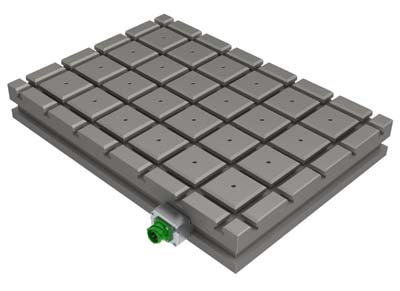Magnetic Chucks
Magnetic Chucks
Designers of special magnetic workholding and handling equipment, DocMagnet Inc. is now offering a complete range of products for the North American market.

Designers of special magnetic workholding and handling equipment, DocMagnet Inc. is now offering a complete range of products for the North American market. DocMagnet now offers magnetic chucks and workholding equipment for milling, turning, grinding and EDM magnets for the metalcutting and production industries. In addition, DocMagnet provide a range of magnetic lifters from 250 lb. to 20 ton lift capacity. DocMagnet undertakes all design work in-house and will tailor solutions to meet special production applications.





